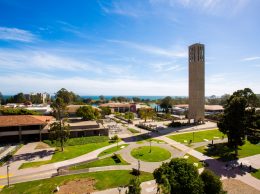 Last week, I spoke with Fareed Zakaria, an author and editor-at-large for Time magazine as well as a CNN host. He’s put a lot of thought into the “rise of the rest” — that is, what the post-American world is going to look like.
Last week, I spoke with Fareed Zakaria, an author and editor-at-large for Time magazine as well as a CNN host. He’s put a lot of thought into the “rise of the rest” — that is, what the post-American world is going to look like.
You can trot out the statistics of your choice to show how America is fast losing its technological edge. We lag other countries in math and science scores. But Zakaria pointed out a number to me that’s much more foreboding — citations in peer-reviewed research.
The U.S. is still No. 1 by this metric, which measures our influence in the worldwide scientific community. We took over the top spot about 75 years ago from Germany, which had held it since its own massive, pre-unification push into science and engineering in the late 1800s. “China is on track to surpass us,” Zakaria told me. “It’s is a big deal for this to happen.”
Indeed it is, because this very metric is one that UC Santa Barbara and many technology companies in the Tri-Counties use to measure their success. Zakaria said he thinks we should be spending more on science and technology research and education than ever.
Like it or not, one of the main sources of that funding is the Pentagon. On May 2, UCSB announced that it will receive $14.5 million from the U.S. Department of Defense in the coming years to investigate nano-scale computer chips and quantum computing.
The grants come as part of $191 million flowing from the Pentagon to campuses nationwide. UC Santa Barbara secured about 7 percent of the total money awarded, the university said in a release.
A $7.5 million award will go to a project led by David Awschalom, the director of UCSB’s Center for Spintronics and Quantum Computation. His lab is investigating how to use quantum mechanical effects — the obscure properties of matter that show up at the sub-atomic scale — in diamonds to create better computer chips than can be made using conventional semiconductors.
Another $7 million will go to an effort led by Kwang-Ting “Tim” Cheng, an electrical and computer engineering professor. He is working to build three-dimensional computer chips that combine current technology with new nano-memristors. The work could eventually pack a lot more number-crunching power into a smaller footprint by putting more memory right next to processors, where it’s needed to store intermediate figures during complex computations.
“The key advantage this technology offers is a much higher density of memory elements and the ability to integrate with computing circuitry,” Cheng told the Business Times.
Both awards are from the Air Force Office of Scientific Research, UCSB said in a release. There were a total of 27 awards across the country.
Michael Witherell, the vice chancellor for research at UCSB, told me that over the past few years, the university has gotten about 30 percent of its federal research dollars from the Pentagon.
“All research at UCSB is unclassified research, and it is mostly from the basic research part of R&D, not the development part,” Witherell said in an email. “As a result, the companies that grow out of this research might or might not be defense contractors. [The Department of Defense] funds research in areas like photonics and technologies that are important for energy efficiency.”
UCSB has a history of using defense dollars to research technology we use all the time. “The most famous example might be the ARPANET, which had UCSB as one of the original four nodes established around 1970,” Witherell wrote. “That became the basis of the Internet around 20 years later.”
As for which of the labs at the university might be the next big thing, Witherell said the academics typically leave that guessing to investors and the private sector. “The difficult part is predicting which of the technologies in the basic research phase will end up transforming industries,” Witherell wrote. “If anybody could figure out how to predict successful technologies that early in a reliable way, that person would be richer than Warren Buffett.”






 Print
Print Email
Email
















